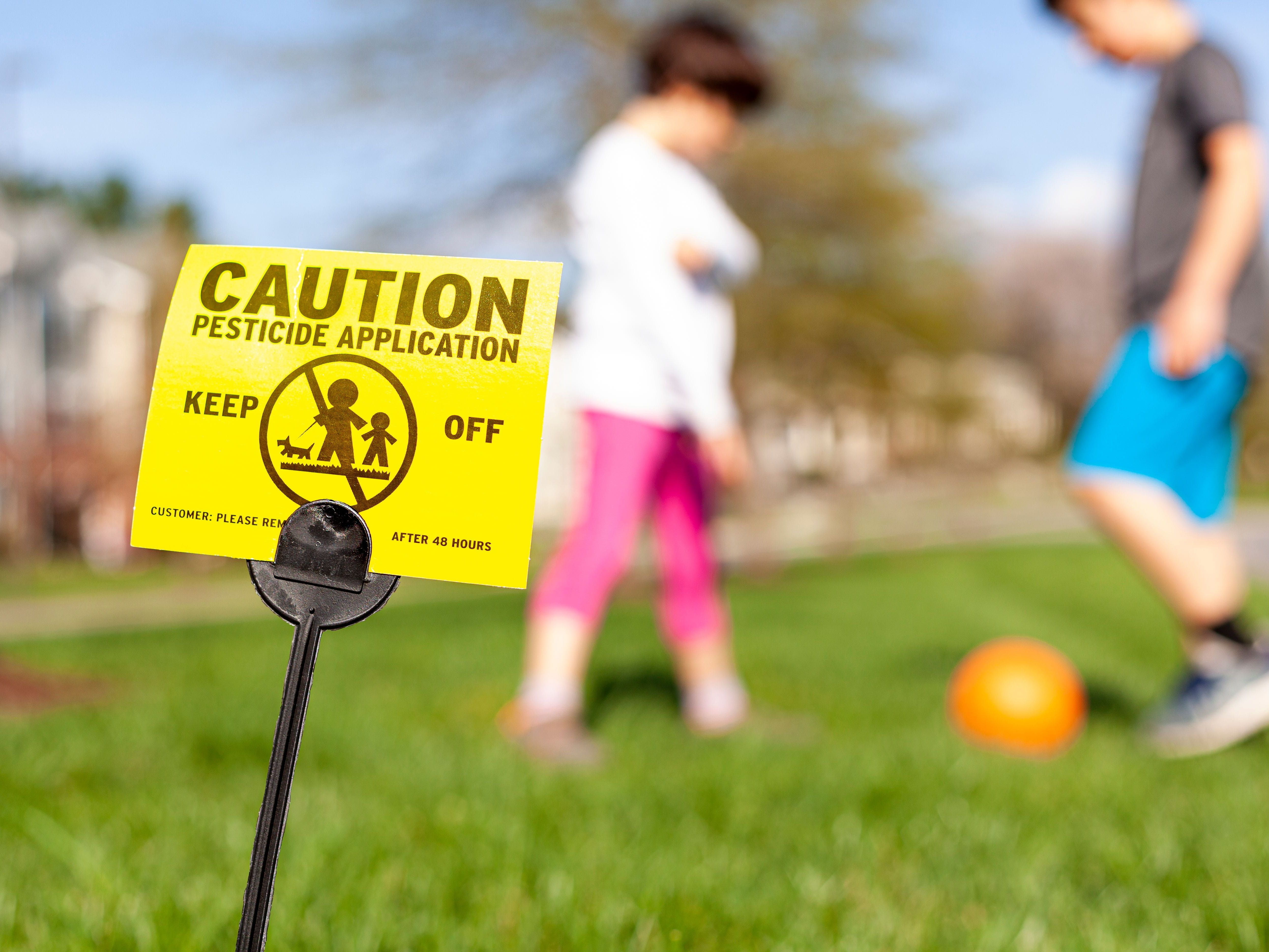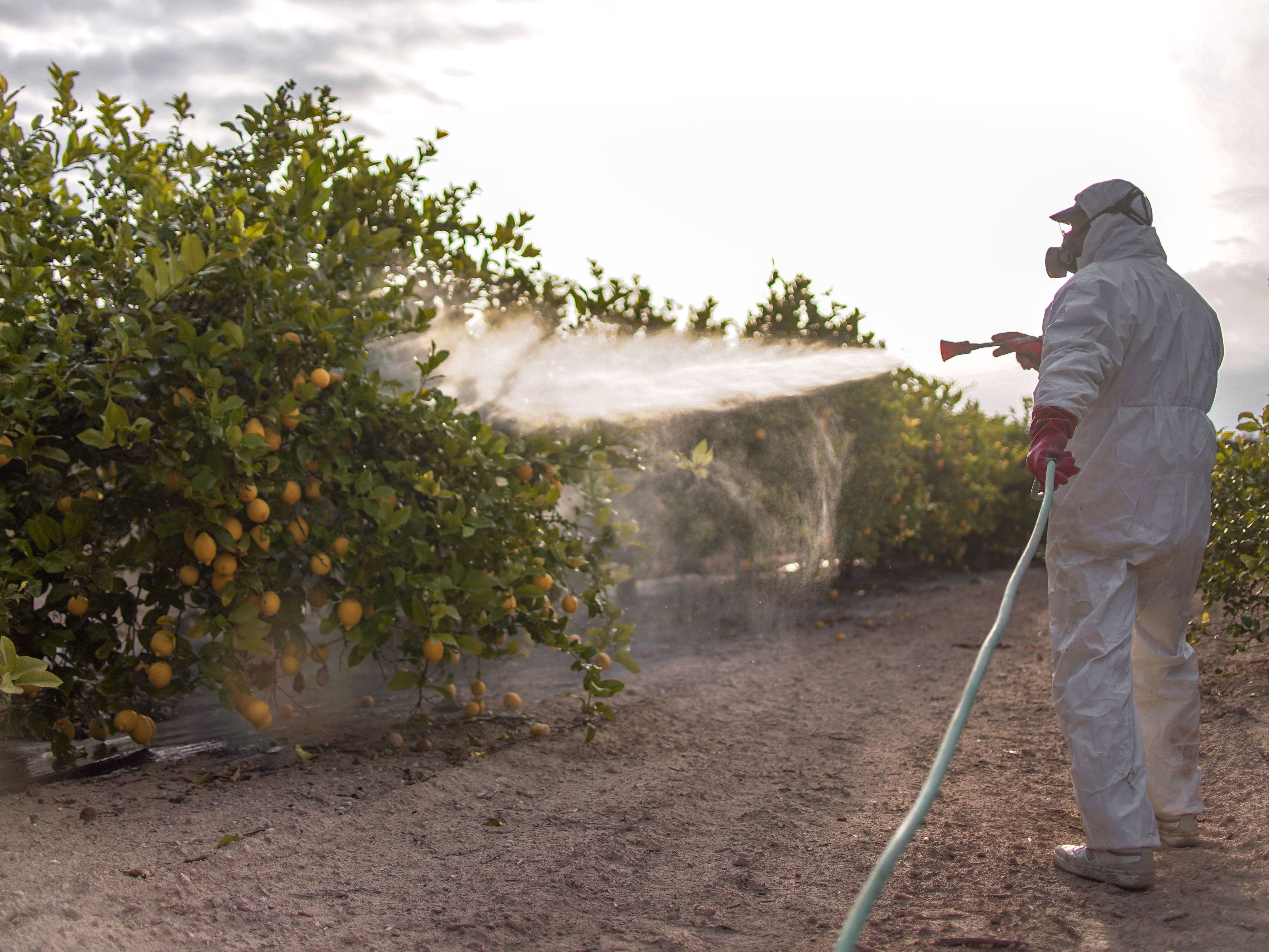Bug Off: Getting the Facts on Insecticides

The Bottom Line
Insecticides are chemicals that kill insects by various mechanisms. Depending on the insecticide, you may experience toxicity from ingestion, contact with skin or eyes, or inhalation. Toxicity might occur following a single acute event, as well as a short- or long-term exposure. If you are concerned about insecticide exposure, call Poison Control to find out your toxicity risk and if you need medical treatment.

How do insecticides work?
Insecticides are chemicals that kill or control insects. There are many types of insecticides that work through different mechanisms. Most insecticides disrupt the insect’s nervous systems. By disrupting the nervous system, insecticides cause paralysis and death of the insect. This can be accomplished by blocking chemical messengers between nerves and muscles (microbial insecticides derived from bacteria or fungi), binding to sodium channels in the nerve cell membrane (pyrethroids), targeting the sensory nerves (derived from botanicals), and blocking enzymes that result in neurotransmitter acetylcholine dysfunction.
Other insecticides interfere with the insect’s metabolism or act as growth regulators or attractants. Some insecticide formulations contain chemicals known as synergists and activators (such as piperonyl butoxide) that are not insecticides, but which enhance the insecticide’s activity.
What are DDT insecticides?
DDT and similar chlorinated hydrocarbon insecticides are highly effective and were widely used from the 1940s to early 1970s. DDT was banned by the Environmental Protection Agency for general use in the US in 1972. It is classified as a probable human carcinogen and persists for decades, resulting in adverse environmental effects. For the same reason, most chlorinated hydrocarbon insecticides are currently banned in the US.Are insecticides harmful to humans?
Some insecticides are harmful to humans. The level of risk varies depending on the insecticide. It is possible to experience acute toxicity from a single exposure to a pesticide, as well as adverse effects after short-term or chronic exposure. Some insecticides may cause cancer and/or harmful reproductive effects including still birth, birth defects, and infertility. Insecticides such as organophosphates may cause neurologic toxicity. Growth regulators, attractants, and similar compounds usually have low toxicity to humans and other non-targeted species such as animals and birds.
Insecticide poisoning symptoms: What to look out for
There is no simple answer to this question, as the signs of a toxic exposure can vary great depending on the insecticide. Here are two examples that represent exposures on opposite ends of the toxicity spectrum. Exposure to organophosphates and carbamates by swallowing or by contact with the skin can cause serious toxicity including vomiting, diarrhea, wheezing, difficulty breathing, respiratory failure, slow or fast heart rate, sweating, tremors, muscle weakness, agitation, seizures, and coma. Short and long-term neurologic toxicity may occur. On the other hand, limonene is considered a low toxicity insecticide, which can cause eye irritation, as well as skin irritation and sensitization but is considered to have low acute toxicity if swallowed.
If you are unsure if you’ve had a toxic exposure to an insecticide, it’s always best to seek help from an expert. Help is available through the webPOISONCONTROL online tool and by phone at 1-800-222-1222. Poison Control’s expert guidance is always free, confidential, and available 24 hours a day.
What is insecticidal soap? Is it safe?
Commercially available insecticidal soaps contain potassium salts of fatty acids. They are sprayed on plants to kill aphids, spider mites, mealy bugs, and other soft bodied insects. They will not work against hard-bodied insects such as beetles. You can make your own insecticidal soap by mixing 1 tablespoon of liquid dish soap with 2 cups of water. Insecticidal soap is safer for humans than some other insecticides.
What are safe alternatives to insecticides?
Use non-chemical methods that minimize insects in and out of the home, such as removing food and standing water sources in the home and clearing out litter and plant debris where insects can shelter and breed. Draining standing water will reduce mosquitoes. Flying insect glue traps, bug catchers and insecticidal soaps are other safe options. Low toxicity alternatives for home and garden include botanicals (such as capsaicin), essential oils (such as peppermint, cinnamon, citronella, thyme, garlic, limonene, and neem), vegetable- or petroleum-based lightweight oils, insect growth regulators (such as benzoylureas or quinazolines), and microbials (such as bacteria, viruses, nematodes, milky spore, or spinosad).
What to do if you’ve been exposed to insecticides
To find out what to do if someone swallows insecticide, gets insecticide in the eyes or on the skin, or breathes insecticide, get expert help from the webPOISONCONTROL online tool or by phone at 1-800-222-1222 right away. Poison Control’s expert guidance is always free, confidential, and available 24 hours a day.
Insecticides may be toxic on the skin, in the eyes, when inhaled, and if swallowed. Some insecticides can be absorbed into the body from skin contact. If you get an insecticide on your clothes and/or skin, remove the contaminated clothes and wash your skin and hair with soap and water. Throw away contaminated clothing or wash it separately from other laundry. If you get insecticide in your eyes, rinse your eyes with water for at least 15 minutes.
Inhaling an insecticide may cause symptoms from either the insecticide itself or the volatile solvent in which it is dissolved. If you inhale an insecticide, leave the area and breathe fresh air. If you swallow an insecticide, rinse out your mouth. Depending on the insecticide, amount, and/or presence of symptoms, you may need to be evaluated by a physician.
Clinical Toxicologist
Poison Control Media Information
Did you find this page helpful? If so, we need your support. Poison Control is in constant competition with misinformation online. Links to www.poison.org or our webPOISONCONTROL triage tool from other websites and blogs help internet searchers quickly find accurate information and Poison Control’s contact information in an emergency. If you use the content from this page, please provide attribution via a link back to this page, www.poison.org, or https://triage.webpoisoncontrol.org/#!/exclusions. By doing so, you could save a life. Thank you!
Poisoned?
Call 1-800-222-1222 or
Prevention Tips
- Keep insecticides up, away, and out of sight of children and pets.
- Read the label carefully and follow the instructions.
- Only use products for insects indicated on the label.
- If you are choosing alternative insecticides mentioned here, be sure they are effective on the insects you are trying to get rid of.
- Only use the amount directed by the product label.
- Wear gloves, pants and long sleeve shirts if the package instructions state to do so.
- If insecticides are sprayed in the home, open windows to help disperse the insecticide.
- Check instructions regarding how long to avoid the area after an insecticide has been sprayed or applied.
- Remove and/or cover toys and food from the area where the insecticide is being applied.
- Dispose of leftover insecticides according to label directions and state or local regulations.
This Really Happened
A 6-month-old boy was accidentally fed formula from an old baby bottle that was used to store commercial-strength organophosphate ant killer. He was taken to the emergency department, where he presented many symptoms of organophosphate poisoning, including vomiting, diarrhea, urination, difficulty breathing (fast breathing, wheezing, gurgling sounds, spasm in upper airway, low oxygen in blood), runny nose, excess saliva, tearing eyes, agitation, decreased level of consciousness and decreased muscle tone. He was admitted to the hospital and received many therapies including airway support and 2 antidotes (atropine and pralidoxime). His symptoms gradually resolved completely, and he was sent home after 4 weeks in the hospital.For More Information
National Pesticide Information Center. http://npic.orst.edu/ (Accessed 7/5/2024)
References
Nolan K, Kamrath J, Levitt J. Lindane toxicity: a comprehensive review of the medical literature. Pediatr Dermatol. 2012;29:141-146. doi: 10.1111/j.1525-1470.2011.01519.x.
Poisoned?
Call 1-800-222-1222 or
Prevention Tips
- Keep insecticides up, away, and out of sight of children and pets.
- Read the label carefully and follow the instructions.
- Only use products for insects indicated on the label.
- If you are choosing alternative insecticides mentioned here, be sure they are effective on the insects you are trying to get rid of.
- Only use the amount directed by the product label.
- Wear gloves, pants and long sleeve shirts if the package instructions state to do so.
- If insecticides are sprayed in the home, open windows to help disperse the insecticide.
- Check instructions regarding how long to avoid the area after an insecticide has been sprayed or applied.
- Remove and/or cover toys and food from the area where the insecticide is being applied.
- Dispose of leftover insecticides according to label directions and state or local regulations.
